|
|

This chapter provides a general overview of the Maintenance Manager software.
This list describes the features of the Maintenance Manager software:
The Maintenance Manager screen is divided into two sections. The navigation area on the left side of the screen is used to view the ONS 15252 multichannel units (MCUs), ONS 15201 single-channel units (SCUs), modules installed in the network, event logs, and alarm logs. The display area on the right side of the screen shows information specific to each MCU, SCU, module, or log (Figure 2-1). To change a value, double-click an editable field.
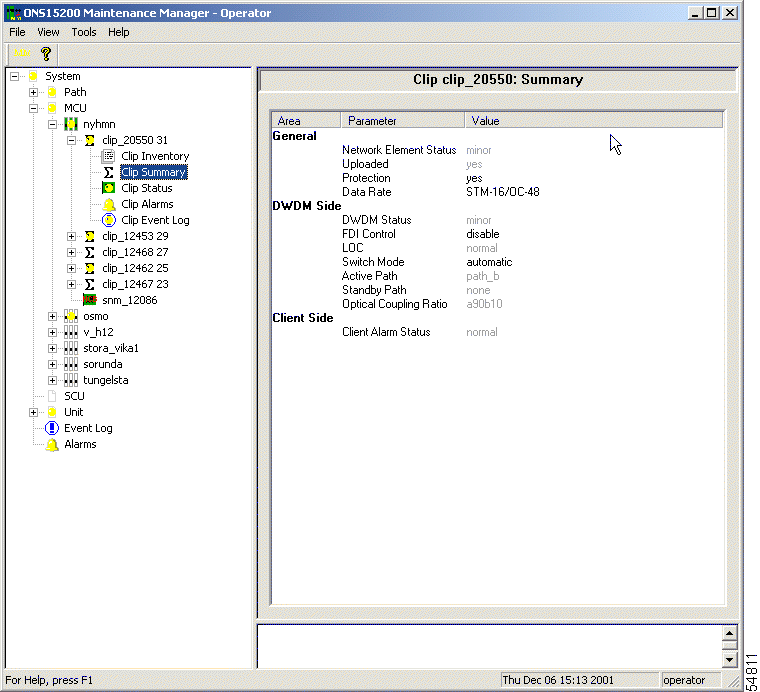
To navigate to different screens, click the folder or page icons in the navigation area. Clicking a folder expands it to display the pages and subfolders it contains. Clicking a page displays the relevant system information.
The System folder contains the following subfolders:
The System folder also contains the system-level Active Alarms screen and the system-level Event Log screen.
The Path folder provides a graphical view of any CLIP module circuit paths, as well as summaries of each circuit path parameter. These parameters include the NE status, data rate, active path, and optical coupling ratio.
The MCU folder provides an inventory of the CLIP modules in each MCU in the system. CLIP modules located in the selected MCU are accessible in a separate subfolder. Click the MCU folder displays a graphical view of the MCU (Figure 2-2).
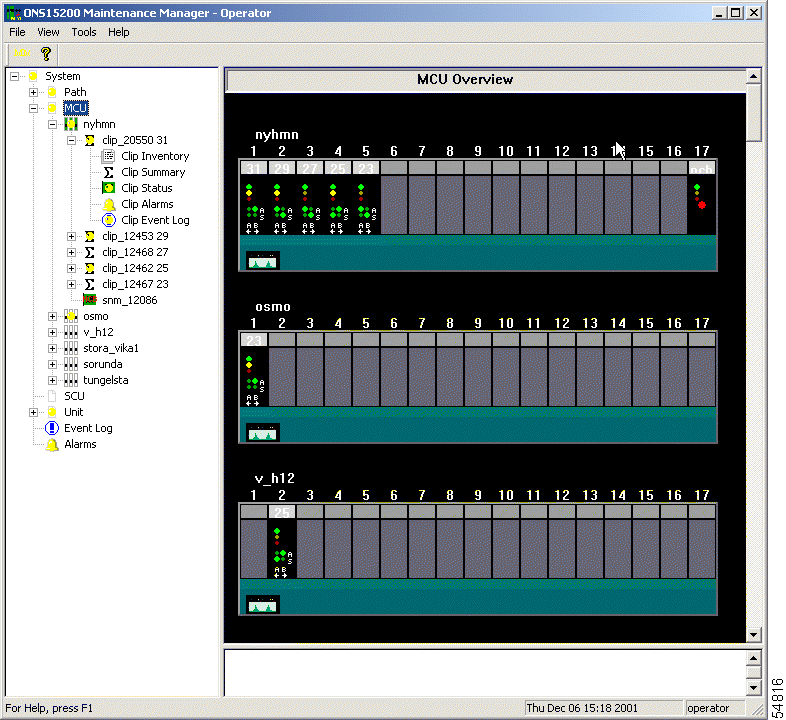
The SCU folder provides access to each of the visible SCUs in the Maintenance Manager. CLIP modules located in the selected SCU are accessible in a separate subfolder.
The Unit folder provides access to the modules installed in the ONS 15200 network that are visible from the Maintenance Manager. Modules listed in the Unit folder are sorted by unit name rather than by the NE where they are installed.
The CLIP folders provide access to each CLIP module installed in the system. There are several ways to access the CLIP folder, but each provides the same categories of information. CLIP folders are located in the following folders:
The CLIP folder is identified by the serial number of the CLIP module and the ITU channel where it is assigned.
Each CLIP folder contains the following screens:
The Paths Overview screen provides a graphical view of all the circuits between ONS 15200 network elements (Figure 2-3). Icons represent the active path, standby path, network elements, and alarms.

When you click on a particular path in the Paths Overview screen, the Path Summary screen appears (Figure 2-4). This screen shows the path for that particular channel and lists parameters for the CLIP modules in that path. Parameters include NE status, data rate, active path, and optical coupling ratio.
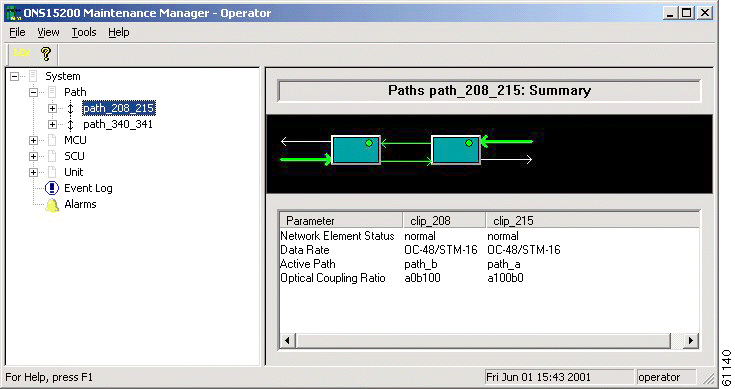
The information available on the Clip Summary screen varies depending on whether the Clip Summary screen is associated with a CLIP module that is configured as protected or unprotected.
The following information is provided by the Clip Summary screen:
For more information regarding each parameter, see "CLIP Module Configuration."
Figure 2-5 shows the Clip Summary screen for a protected CLIP module.

The information available on the Clip Status screen varies depending on whether the Clip Status screen is associated with a CLIP module that is configured as protected or unprotected.
The Clip Status screen provides the following information:
For more information regarding each parameter, see to "CLIP Module Configuration."
Figure 2-6 shows the Clip Status screen for a protected CLIP.
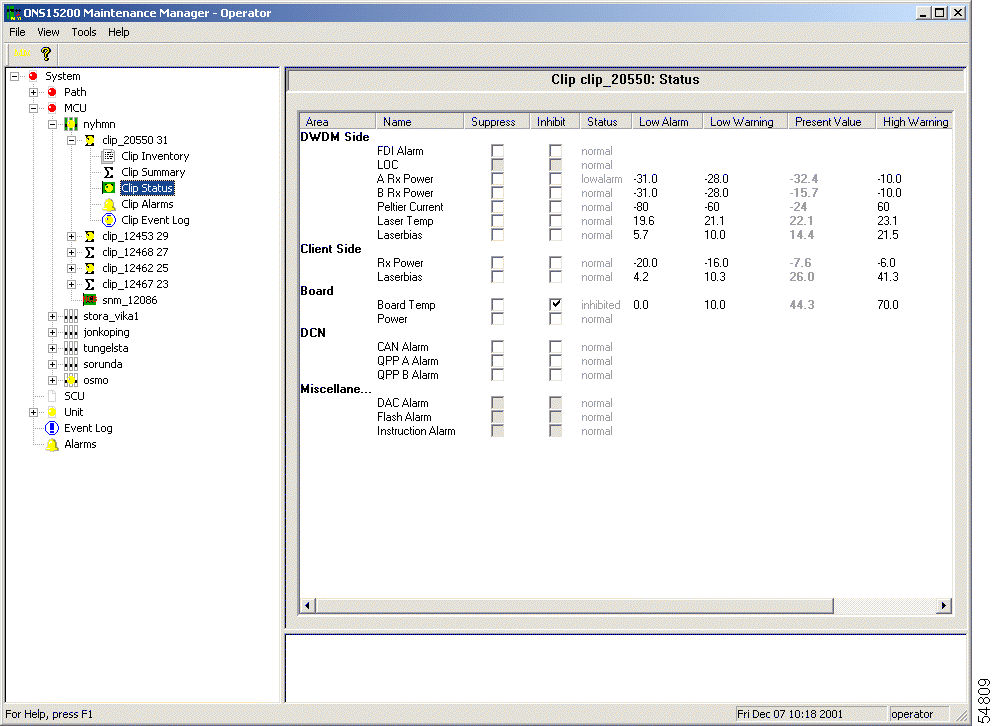
The Clip Active Alarms screen provides a list of all active alarms (Figure 2-7). Alarm screens are available for each CLIP module and for the complete ONS 15200 system. For more information regarding each parameter, see "Alarms."
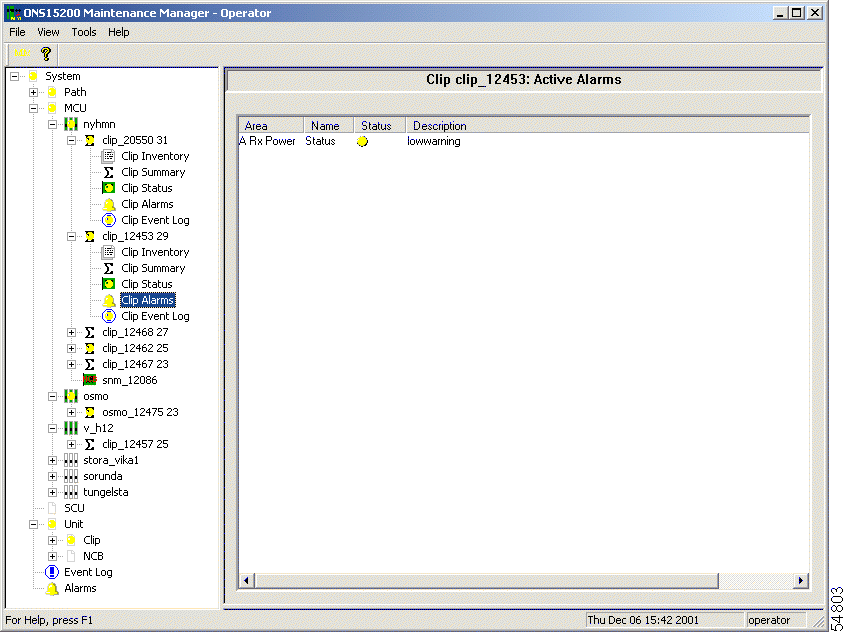
The Event Log screen provides a tabular list of system events (Figure 2-8). The following information is provided:
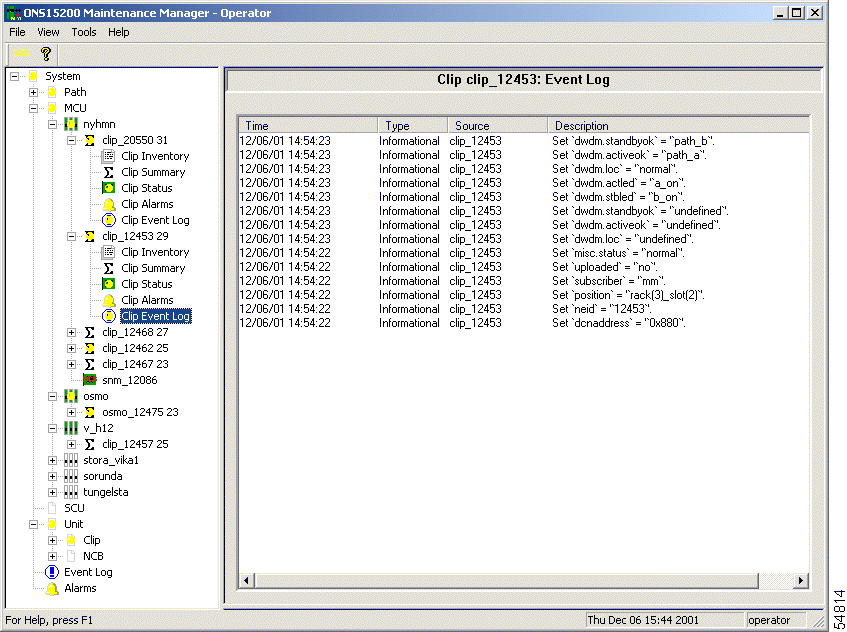
The Inventory screen lists the modules installed in the NE (Figure 2-9).
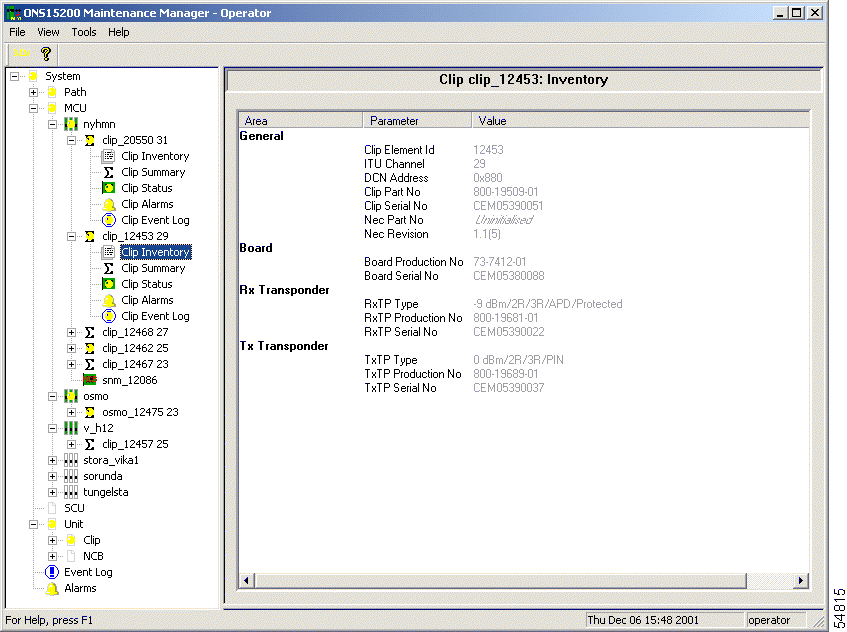
![]()
![]()
![]()
![]()
![]()
![]()
![]()
![]()
Posted: Mon Jan 7 02:38:35 PST 2002
All contents are Copyright © 1992--2002 Cisco Systems, Inc. All rights reserved.
Important Notices and Privacy Statement.